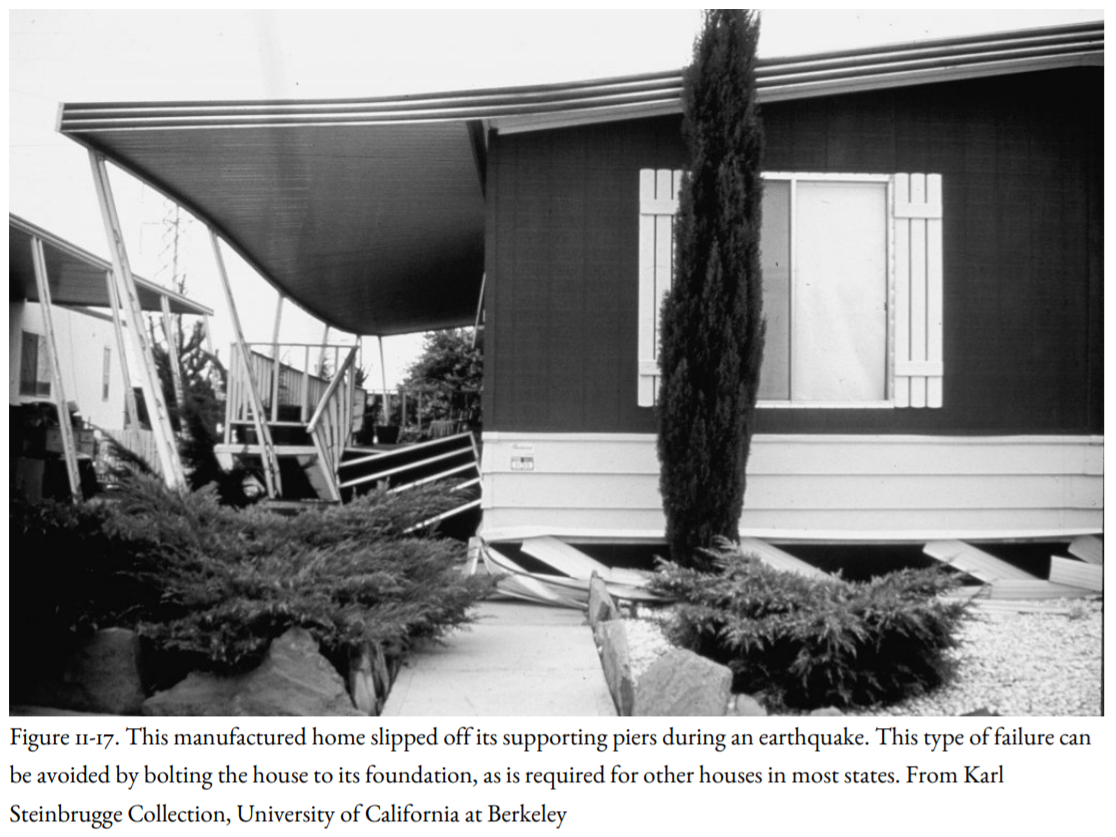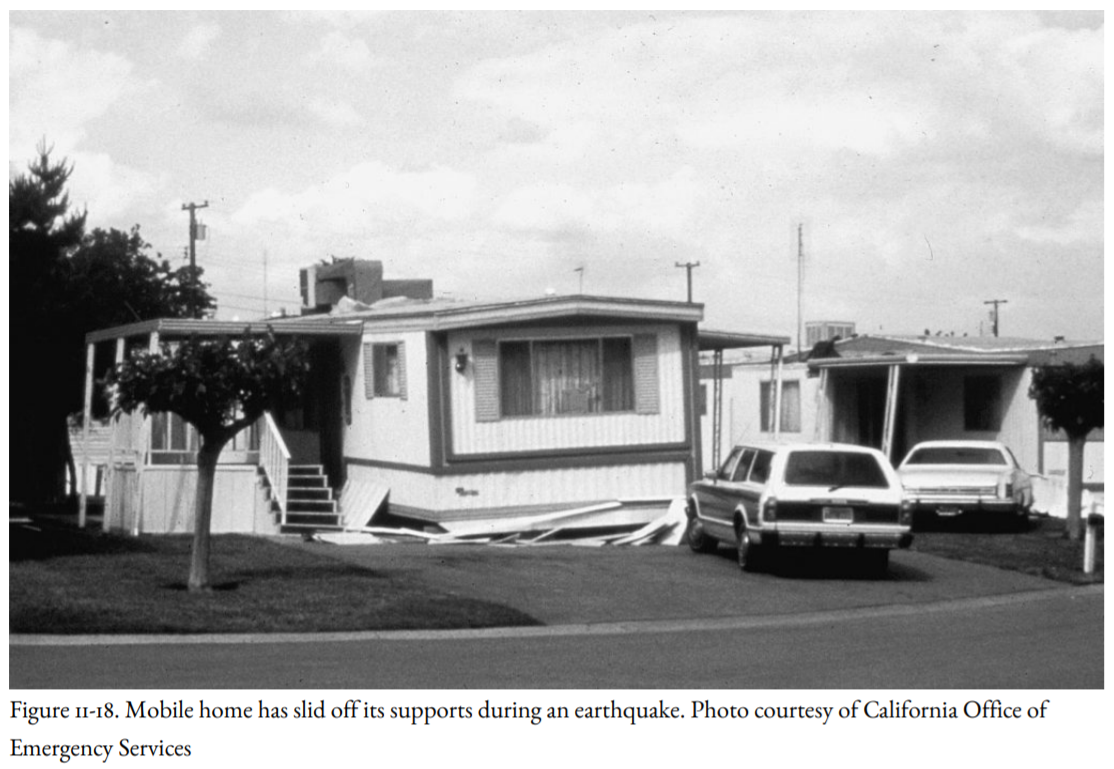7.2.12: Mobile Homes and Manufactured Houses
- Page ID
- 6261
Overview
Because these houses must be transported to their destination, they are more likely than an ordinary house to behave as a coherent structural unit during an earthquake. Manufactured houses are built on one or more steel I-beams that provide structural support in the direction of the I-beam. However, mobile homes and manufactured houses are commonly not bolted to a foundation, but instead rest on concrete blocks that are likely to collapse during even low horizontal accelerations (Figures 11-17, 11-18). This would cause the house to flop down onto its foundation, as illustrated earlier for cripple-wall failures. A mobile home is likely to undergo less structural damage than an ordinary house but is more likely to suffer extensive damage to the contents of the house. The house could be prevented from sliding off its blocks during an earthquake by replacing the blocks with a cripple wall and securing it as described above for ordinary houses. This would make the house insurable against earthquakes.


A double-wide mobile home must be well connected at the join between the two halves (marriage line) so that the two halves do not fail at the join and move independently during strong shaking. Ridge beams should be attached with half-inch carriage bolts spaced at a maximum of forty-eight inches at ninety degrees and three-eighths-inch lag screws, with washers, spaced every twenty-four inches at forty-five degrees maximum angle. Floor connections must use three-eighths-inch lag screws with washers installed diagonally at forty-five degrees or less, with spacing not exceeding thirty-two inches. Even so, it’s likely that a double-wide manufactured home will fail at the marriage line if it slips off its concrete block foundation during an earthquake.


